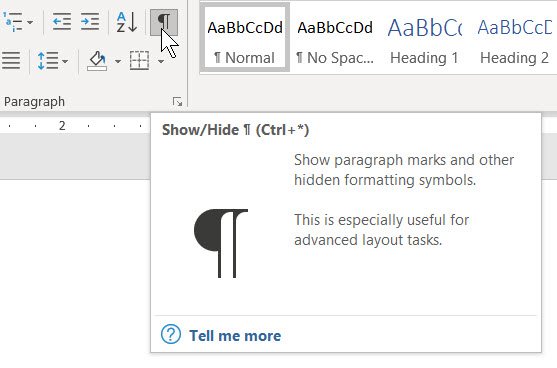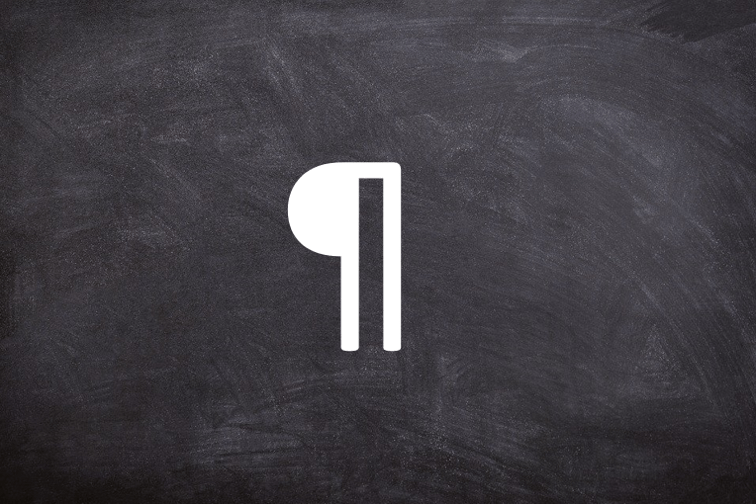

- HOW TO REMOVE CARRIAGE RETURN SYMBLE MS WORD ON MAC HOW TO
- HOW TO REMOVE CARRIAGE RETURN SYMBLE MS WORD ON MAC FOR MAC
- HOW TO REMOVE CARRIAGE RETURN SYMBLE MS WORD ON MAC WINDOWS
In the Find and Replace dialog box, do the following:. Or click Find & Select > Replace on the Home tab, in the Editing group. Press Ctrl + H to open the Replace tab of Excel's Find and Replace dialog.  Select all the cells in which you want to start a new line(s). Luckily, there is an extremely useful trick to put multiple lines into all selected cells in one go!Īs an example, let's add a carriage return after each comma in a text string: In case you received a worksheet with many one-line entries, breaking each line manually might take hours.
Select all the cells in which you want to start a new line(s). Luckily, there is an extremely useful trick to put multiple lines into all selected cells in one go!Īs an example, let's add a carriage return after each comma in a text string: In case you received a worksheet with many one-line entries, breaking each line manually might take hours. HOW TO REMOVE CARRIAGE RETURN SYMBLE MS WORD ON MAC HOW TO
How to insert a line break after a specific character After that, press Enter to complete the formula and exit the edit mode. In a cell or in the formula bar, place the cursor before the argument that you want to move to a new line and press Ctrl + Alt. The Excel line break shortcut can do this too. Sometimes, it may be helpful to show lengthy formulas in multiple lines to make them easier to understand and debug. This will insert consecutive line feeds within a cell like shown in the screenshot below:Ĭreate a new line in formula to make it easier to read If you'd like to have a gap of two or more lines between different text parts, press Alt + Enter twice or more times. In some cases, you may also need to adjust cell width manually.Īdd multiple line breaks to increase spacing between lines

For this, simply select the cell(s) and click the Wrap Text button on the Home tab, in the Alignment group. To see multiple lines in a cell, you need to have Wrap text enabled for that cell. The following tips show how to avoid common problems when inserting multiple lines in one cell and demonstrate a couple of unobvious uses. If the text still shows up in one line, make sure the Wrap text feature is turned on.
Press Enter to finish up and exit the edit mode.Īs the result, you will get multiple lines in Excel cell. In Excel for Mac, hold Control and Option while pressing the Return key. On Windows, hold Alt while pressing the Enter key. If the text is already in the cell, place the cursor where you want to break the line. Double-click the cell where you want to enter a line break. To add a new line in Excel cell with a shortcut, please follow these steps: HOW TO REMOVE CARRIAGE RETURN SYMBLE MS WORD ON MAC FOR MAC
If you are accessing Excel for Mac via Citrix, you can make a new line with the Command + Option + Return key combination. If it does not work for you, then try the traditional Mac shortcuts above.
HOW TO REMOVE CARRIAGE RETURN SYMBLE MS WORD ON MAC WINDOWS
Option is the equivalent of the Alt key on Windows, so it seems the original Windows shortcut (Alt + Enter) now works for Mac too. In Excel 365 for Mac, you can also use Option + Return.
Mac shortcut for line feed: Control + Option + Return or Control + Command + Return. Windows shortcut for line break: Alt + Enter. The fastest way to create a new line within a cell is by using a keyboard shortcut: Insert line break in cell after certain character. So, how do you create a new line in Excel? There are three swift ways to do this. In Microsoft Excel, however, this work differently - pressing the Enter key completes the entry and moves the cursor to the next cell. In most Office applications, starting a new paragraph is not a problem - you simply press Enter on your keyboard. A good example of multi-line text could be mailing labels or some personal details entered in one cell. When using Excel for storing and manipulating text entries, you may sometimes want a certain part of a text string to start in a new line. Here’s a Word 2011 document showing invisible characters.The tutorial will teach you three quick and easy ways to add a line break in Excel cell: use a shortcut to type multiple lines, Find & Replace feature to add a carriage return after a specific character, and a formula to combine text pieces from several cells each starting in a new line. Most of the requests I get on this topic concern turning invisibles off, because since the user often doesn’t know how he turned those invisible characters on, he also doesn’t know how to turn them off. Those characters are just as “charactery” as anything else you type– they take up space, they’re copy and paste-able, you can give them a point size– but they’re invisible, and they don’t print. Microsoft Word on the Mac has a nice feature that lets you show invisible (non-printing) characters such as returns, tabs, and spaces. Command-8 to show them, Command-8 again to hide them. There’s a keyboard shortcut for toggling invisible characters (like paragraph marks, and spaces, and tabs) in Microsoft Word on a Mac and as far as I know it’s worked in every version, since the very beginning.







 0 kommentar(er)
0 kommentar(er)
